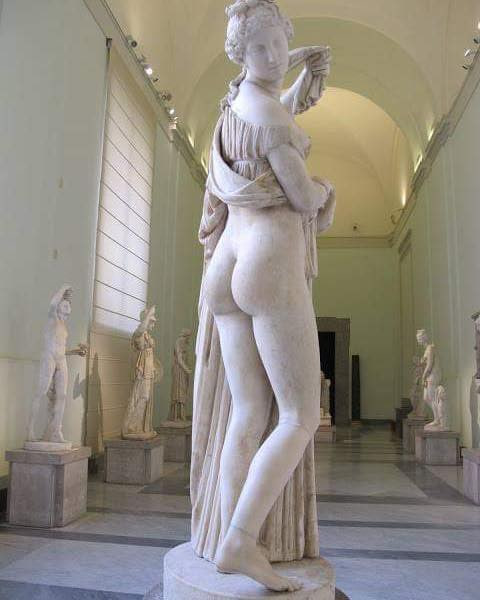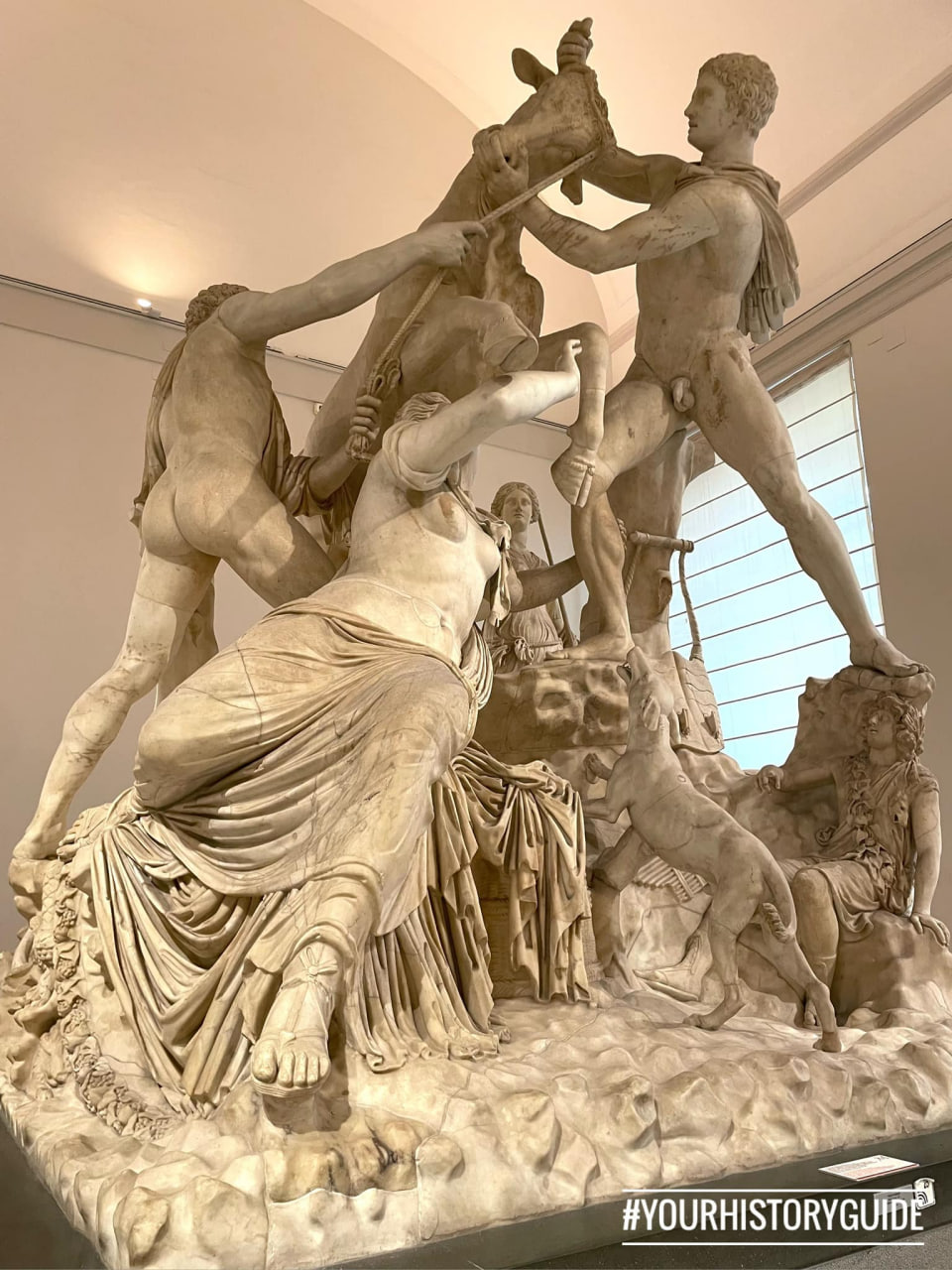Antonio Canova's "The Three Graces," sculpted in 1817, stands as a pinnacle of Neoclassical elegance and purity in form. A photograph of this masterpiece reveals the seamless blend of artistic skill and mythological reverence, capturing the ethereal beauty that Canova, a master sculptor of his time, so exquisitely realized in marble.
The Three Graces, daughters of Zeus and embodiments of beauty, charm, and joy, are depicted in an intimate moment of embrace, a circle of unity and affection. Their figures, carved from a single block of marble, radiate with the softness of flesh and the tenderness of sisterly love. The translucency of the material under the sculptor’s hand suggests the delicate nature of their divine form.

In the photograph, the smooth contours and fluid lines of the sculpture invite the eye to travel around the figures, to engage with the sculpture from every angle. Canova’s attention to detail is evident in the intricate carving of their hair and the drapery that falls gently from their hands, highlighting the technical prowess that brings this cold stone to life.
The arrangement of the figures in the sculpture, a delicate balance of interacting forms, showcases Canova’s genius in creating a sense of movement and harmony. The Graces are locked in a perpetual dance, their limbs and gazes intertwined, signifying the unity of their attributes that were so revered in classical antiquity.

This 19th-century interpretation of an ancient theme echoes the Renaissance revival of classical ideals, a return to the study of nature and the human body’s perfection. Canova, with his polished style, has given form to a timeless concept—the grace of the human figure and the joy found in artistic expression.
"The Three Graces" is more than a representation of mythological figures; it is a testament to human creativity's grace. It stands as a timeless celebration of beauty, a reminder of the importance of aesthetics and the human form’s power to convey complex narratives and emotions.

Today, as we view the photograph of Canova’s "The Three Graces," we are reminded of the continuing allure of classical mythology and the enduring power of sculpture to speak to our sense of beauty across the ages. The piece resides not only in the physical space of galleries but also in the collective imagination of those who are moved by the purity of its form and the story it tells.






